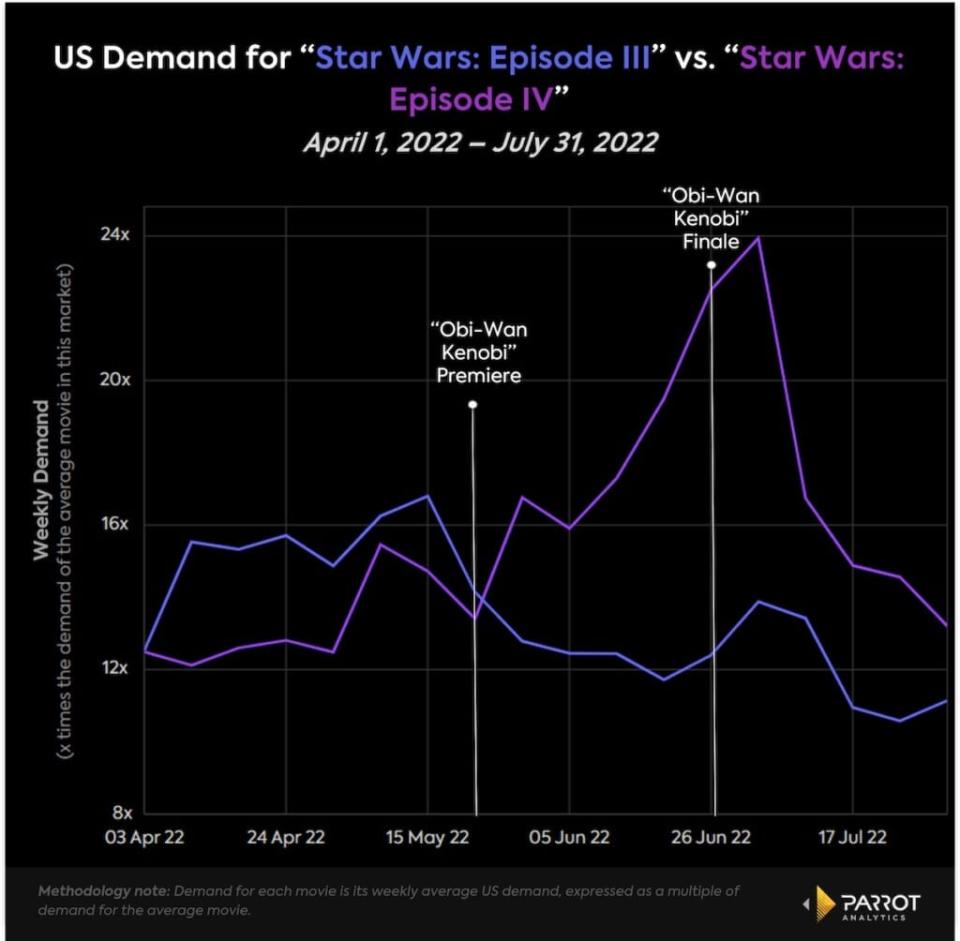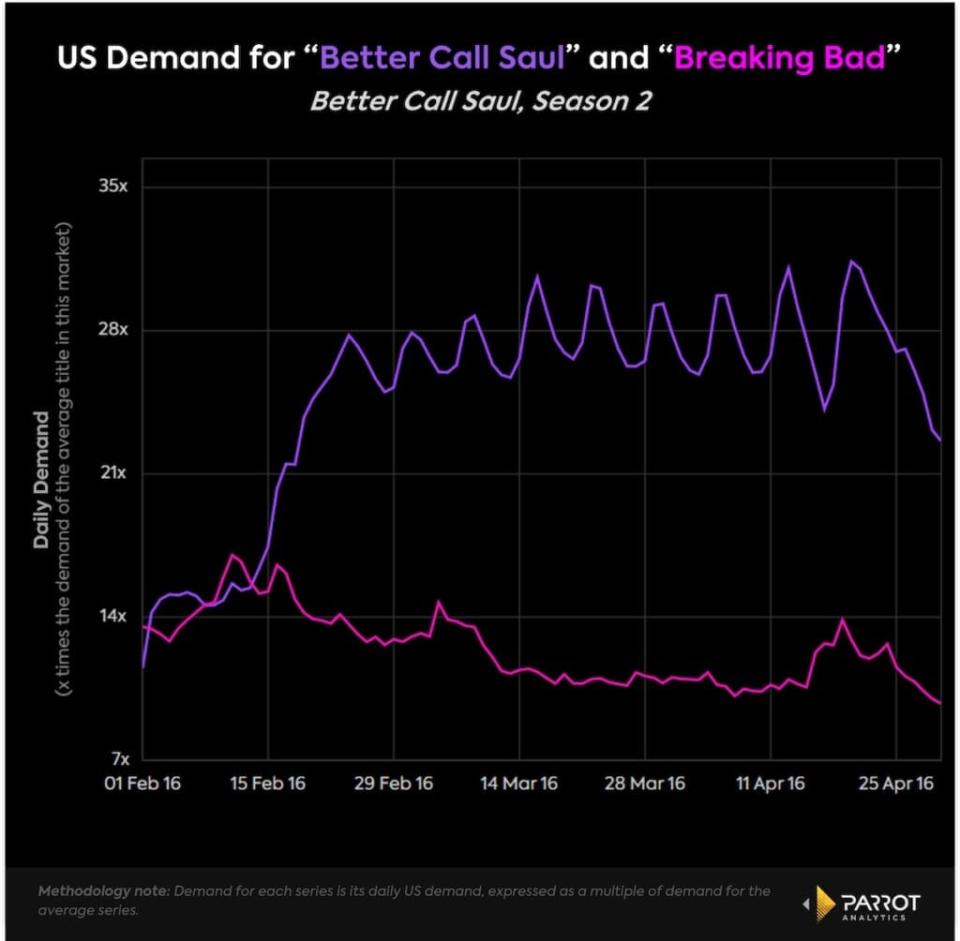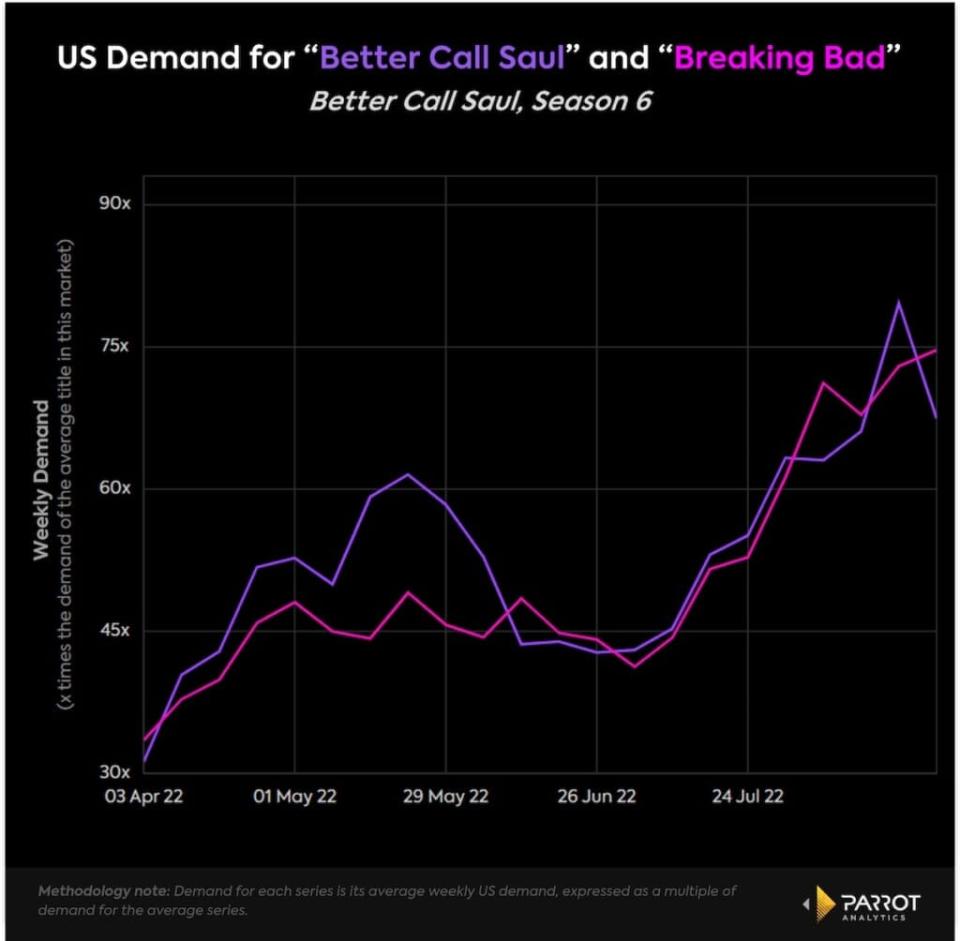What Disney+’s ‘Obi-Wan Kenobi’ Shows About the Role Prequels Play in Franchises | Charts
- Oops!Something went wrong.Please try again later.
- Oops!Something went wrong.Please try again later.
- Oops!Something went wrong.Please try again later.
Building out large franchises to capture audience attention is not a new strategy, but recently there has been a surge in one particular way of doing this: the prequel. This may well go down as the summer of the prequel as franchise after franchise has chosen to expand its universe backward in time rather than forward. So what exactly is going on? Is this simply a fad or is there a rationale for creating this type of content? We looked at audience demand for several recent prequels to understand how prequels can be a strategic way to grow a franchise.
One recent show that nicely illustrates the impact a prequel can have on its franchise is Disney+’s “Obi-Wan Kenobi.” The “Star Wars” universe is so well developed that “Obi-Wan Kenobi” isn’t simply a prequel but fits into the the existing content landscape like a bridge between “Episode III: Revenge of the Sith” and “Episode IV: A New Hope.” So, in some ways it’s simultaneously a prequel and a sequel and we can see its impact in both directions.

Weeks ahead of the premiere of “Obi-Wan” on May 27, demand for “Star Wars: Episode III” was slightly elevated, according to Parrot Analytics‘ data, which takes into account consumer research, streaming, downloads and social media, among other engagement.
Presumably, fans brushed up on the “Star Wars” canon that chronologically precedes “Obi-Wan.” However, it was the movie that follows “Obi-Wan” in the timeline that saw the greatest impact from the new series. Demand for “Star Wars: Episode IV” saw a strong upward trend throughout the release of “Obi-Wan” and peaked at 24 times the average series demand the week after “Obi-Wan” concluded.
This has an important lesson. Content that chronologically follows a prequel is more likely to benefit from increased attention than content that precedes it. Ultimately, when audiences reach the end of a show in a franchise, they are left wondering what’s next. When that show is a prequel, the obvious answer is to continue along the timeline with content that already exists. Expanding a franchise with a prequel allows preexisting content to benefit from the momentum of a new prequel. The funny thing is that George Lucas embraced the opportunity of prequels from the beginning of “Star Wars.” The audacity of starting with a movie titled “Episode IV” guaranteed that the franchise would grow both forward and backward in time.
The recent series finale of AMC’s “Better Call Saul” also has some lessons for crafting an extremely effective prequel. When the show first premiered in 2015, it was set six years before the events of “Breaking Bad” and centered on the life of the lawyer, Saul Goodman. The show won popular and critical praise in its own right without relying on its connection with “Breaking Bad.” When we look at demand for “Breaking Bad” during the second season of “Better Call Saul,” we can see that it didn’t really increase despite huge demand for its prequel.

However, demand for “Breaking Bad” was highly correlated with demand for the final season of “Better Call Saul” as it released episodes. As the timeline of “Better Call Saul” intersected with “Breaking Bad” and characters made guest appearances, fans became much more interested in revisiting the original show so its demand rose in parallel with its prequel. For a platform with both series available, this is essentially a two-for-one deal as both series are commanding the same high level of attention with only one releasing new episodes. The lesson here is that building connections to the existing franchise is key for getting the most synergistic benefit from a spinoff.

Two of the most high-profile recent franchise expansions, HBO’s “House of the Dragon” and Amazon Prime Video’s “The Lord of Rings: The Rings of Power” are both set well before their existing franchise content. “House of the Dragon” takes place about 200 years before “Game of Thrones” while “The Rings of Power” is set thousands of years before “The Hobbit.” These distant settings may make it hard for these series to benefit their franchise in the same way that “Obi-Wan” and “Better Call Saul” did with their more direct links, but the “Lord of the Rings” and “Game of Thrones” source material is some of the most popular available. As expanding franchises become an even more important strategy of media companies, executing in a way that makes the most of existing content will be key. Prequels are looking like a particularly effective way to unlock the full value of a franchise.

